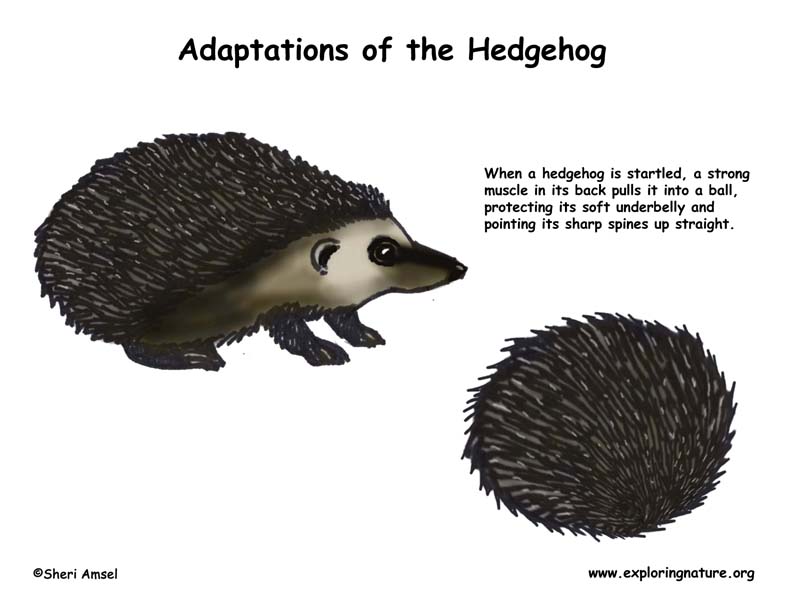

Adaptation in a population of living things happens as a result of an adaptive trait. This is any inheritable trait that increases its survival rate so that it can live longer, reproduce longer, and have more offspring (that also have that trait). Adaptive traits can improve an animal's ability to find food, make a safer home, escape predators, survive cold or heat or lack of water.
The hedgehog’s spines are an obvious adaptive trait to repel prey. When a hedgehog is startled, a strong muscle in its back pulls it into a ball, protecting its soft underbelly and pointing its sharp spines up straight. This is a physical adaptation and behavioral adaptation working together to protect themselves. They cannot release their spines into the skin of an attacker, like a porcupine, but they are still very sharp and put off predators.
For Discussion and Critical Thinking:
The hedgehog has adaptive traits that helps it survive in its habitat.
1. Name two of the hedgehog’s adaptive traits - one physcial and one behavioral, and how they help it survive:
2. Name two animals from your yard, local parks or wild areas (forests, prairies, wetlands, etc.) and a physical and behavioral adaptation for each that helps them survive.
3. Have you ever noticed that when you are startled, afraid or chilled the hairs on your arms or the back of your neck stand up? How do you think this might be like the hedgehog’s adaptive trait?
When you research information you must cite the reference. Citing for websites is different from citing from books, magazines and periodicals. The style of citing shown here is from the MLA Style Citations (Modern Language Association).
When citing a WEBSITE the general format is as follows.
Author Last Name, First Name(s). "Title: Subtitle of Part of Web Page, if appropriate." Title: Subtitle: Section of Page if appropriate. Sponsoring/Publishing Agency, If Given. Additional significant descriptive information. Date of Electronic Publication or other Date, such as Last Updated. Day Month Year of access < URL >.
Amsel, Sheri. "Adaptations of the Hedgehog" Exploring Nature Educational Resource ©2005-2024. December 13, 2024
< http://mail.exploringnature.org/db/view/1669 >

